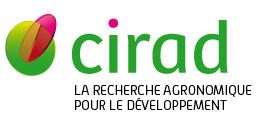Coupling of pressure-driven membrane technologies for concentrating, purifying and fractionizing betacyanins in cactus pear (Opuntia dillenii Haw.) juice
Tamba A., Servent A., Mertz C., Cisse M., Dornier M.. 2019. Innovative Food Science and Emerging Technologies, 52 : p. 244-255.
An integrated process coupling crossflow micro and ultra or nanofiltration was applied to separate the betacyanins in cactus pear juice (30ô¢ô¯C). Four microfiltration ceramic membranes (0.1ã0.2ô¢ôçm, 1.8ã3.3ô¢bar) and 4 ultra/nanofiltration organic membranes (0.2ã4.0ô¢kDa, 5ã30ô¢bar) were tested. Microfiltration was a first step to remove insoluble solids with low retention of soluble solids. By coupling with enzymatic liquefaction, permeate flux Jp was increased by 2 and the retention of betacyanins was limited. Ultra/nanofiltration was then used for solute separation. Retentions of solutes could be modulated by varying membrane/pressure combinations that favor rather the concentration of all the solutes or rather the purification of the betacyanins with respect to the total dry matter. Retention of individual betacyanins could be a little different which also made possible fractionation. Simulations using simple models allowed to evaluate the interest of the process for concentrating, purifying and fractionating betacyanins with a possible diafiltration step. Industrial relevance Betacyanins are natural colorants that can be obtained from cactus pear juice, a crop of increasing interest for its agricultural potential in Sahelian regions. The aim of this study was to evaluate a new integrated process based on membrane separation allowing to concentrate or separate betacyanins from other solutes at low temperature and with a limited environmental impact. This process associates a first step to clarify the cactus pear juice by microfiltration after enzymatic liquefaction and a second step to concentrate or purify betacyanins by ultra or nanofiltration. By choosing different membrane/transmembrane pressure combinations in the 2nd step, solute retentions could be modulated in order to favor rather the concentration of all solutes or rather the separation of betacyanins from total soluble solids or even rather the fractionation of betacyanins themselves.
Mots-clûˋs : opuntia; jus de fruits; filtration û membranes; microfiltration; ultrafiltration; nanofiltration; purification; concentration; fractionnement; sûˋnûˋgal; opuntia dillenii; bûˋtacyanine
Documents associûˋs
Article (a-revue û facteur d'impact)
Agents Cirad, auteurs de cette publication :
- Dornier Manuel — Persyst / UMR QUALISUD
- Mertz Christian — Persyst / UMR QUALISUD
- Servent Adrien — Persyst / UMR QUALISUD
